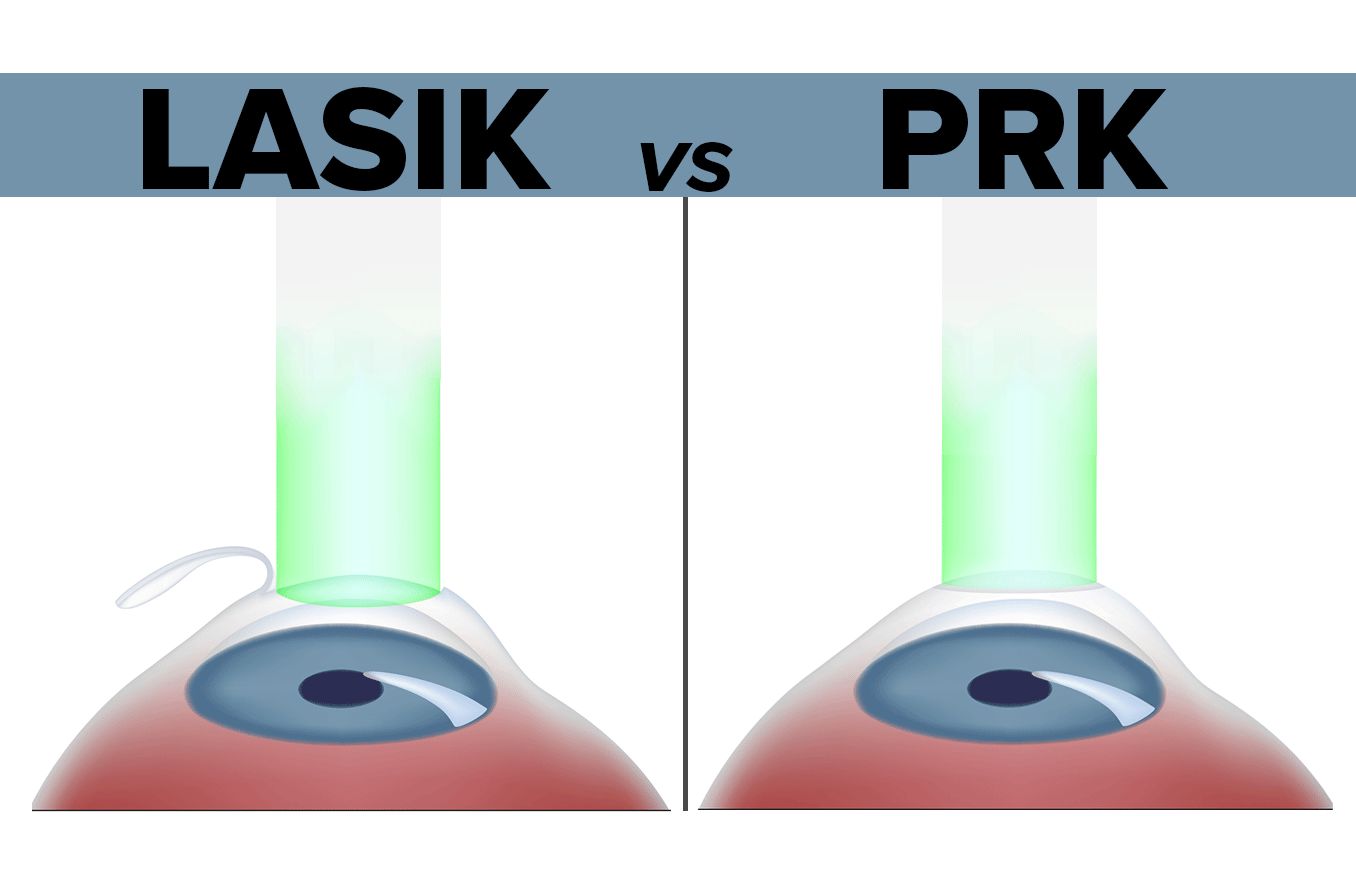A New Perspective with LASIK: PRK or LASIK – Which is Better?

The most commonly used techniques in Kraff Eye Institute for instance in laser eye surgery for grade correction are PRK refractive surgery and LASIK. Below we will discuss the price and explain the differences between the two surgeries.
Only those who wear glasses or contact lenses know how uncomfortable this accessory can be, which is Why refractive surgery is so popular and, for many, a symbol of independence.
Refractive surgery is a way to correct refractive errors in a prolonged way, with laser surgery being used to correct the degree of myopia, hyperopia, and astigmatism, to reduce dependence on glasses.
In PRK and LASIK techniques, the surgeon uses the Excimer Laser to sculpt the cornea and adjust its shape. That’s why it’s called “laser surgery.” The main differences between PRK surgery and LASIK surgery are the way the laser is accessed, the recovery time, the postoperative criteria, and the cost of the procedure.
For people with surgical indications, the PRK technique applies in most cases. However, the choice between lasik vs prk depends on specific conditions of the patient’s ocular structure, such as the thickness and shape of the cornea. The surgeon uses the test results, the previous evaluation, and the patient’s activity profile to indicate which techniques are most indicated or if both are applicable.
How Is Refractive Surgery Performed?
Refractive surgery is usually a quick procedure performed in an operating room by an ophthalmologist specializing in cornea and refraction.
In the ” LASIK ” technique, the surgeon makes an incision in the cornea that allows it to be lifted, like a lid, allowing access to the laser and application directly to the cornea. In the “PRK” technique, there is a scraping process, exposing the cornea and allowing the application of the laser.
Both surgical techniques are quite safe, and LASIK stands out for faster recovery, with vision recovered 90% after the first day. However, LASIK is not for everyone. For those with a very thin cornea or inadequate corneal curvature, PRK refractive surgery is the most suitable for grade correction surgery.
LASIK Surgery With Intralase
As seen above, the surgeon makes an incision in the cornea using the Excimer Laser in LASIK surgery. This incision is like a cutout, called a flap, which can be made with a high-precision automated blade called a microkeratome or a femtosecond laser. IntraLase is a Femtosecond laser technology.
IntraLase is the most popular and widespread, but there are other Femtosecond technologies, such as Visulas, Femto LDV, and Femtec, each of them with different proposals, and even because the Femtosegudos laser is a flexible and powerful surgical tool, it is also used in other types eye procedures such as intracorneal ring and corneal transplants.
IntraLase and other Femtosecond lasers in refractive surgery usually provide a more regular cut, but both LASIK surgery with a microkeratome and LASIK with Intralase produce similar and extremely satisfactory results.
Who Can Have Refractive Surgery?
The eye surgeon’s medical evaluation will determine whether or not a patient can have laser eye surgery. In addition to the structure of the eyes, some other factors influence the doctor’s decision. We provide a quick test to determine if you can have refractive surgery; answer a few questions, and the result immediately comes out.
First of all, the patient’s grade must be stabilized. Therefore, not having had a change in the prescription of glasses or lenses in the last two years is essential. Generally, the degree stabilizes around the ages of 18 and 21, but this can vary according to other factors that influence the development of the eye.
Once the degree is stabilized, the ophthalmologist will evaluate the patient and request tests depending on each case; the most common is a corneal tomography test, and the best known are Galilei and Pentacam. The exam shows essential information that will define whether or not it is possible to perform the surgery.
Some diseases, medications, and conditions, such as pregnancy, breastfeeding, or decompensated diabetes, make the surgery unfeasible.
